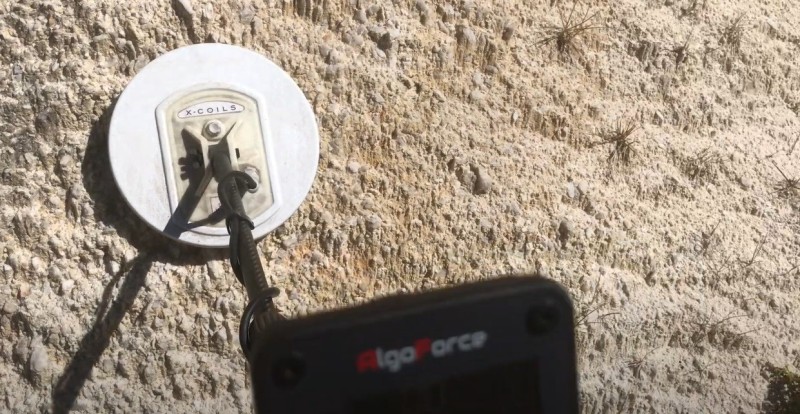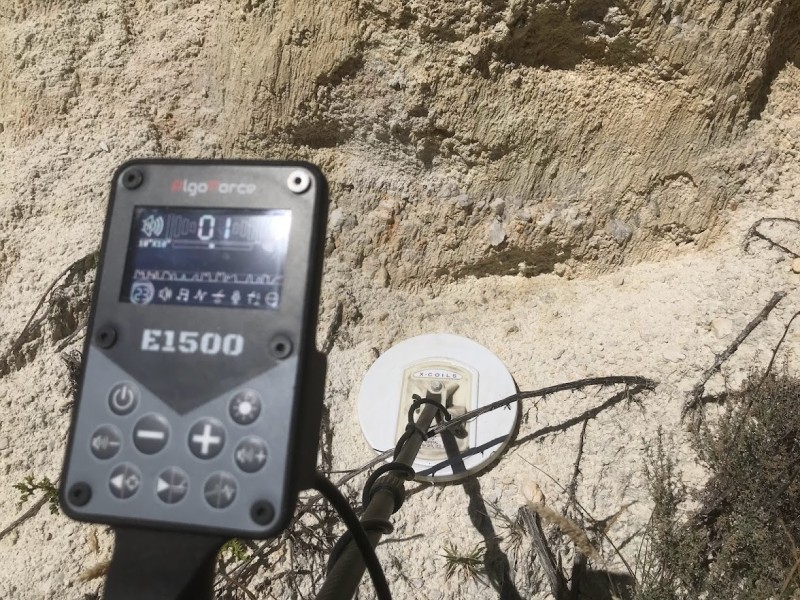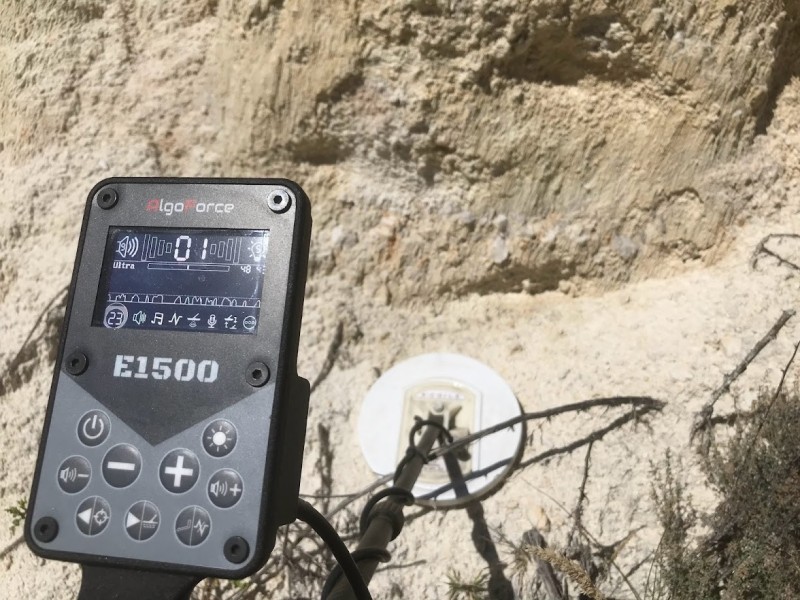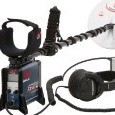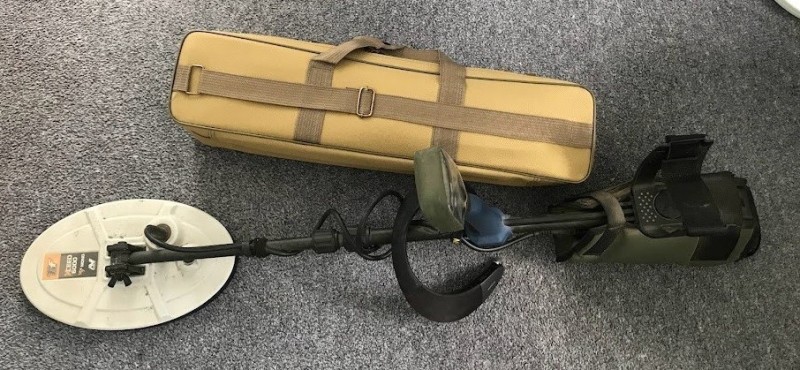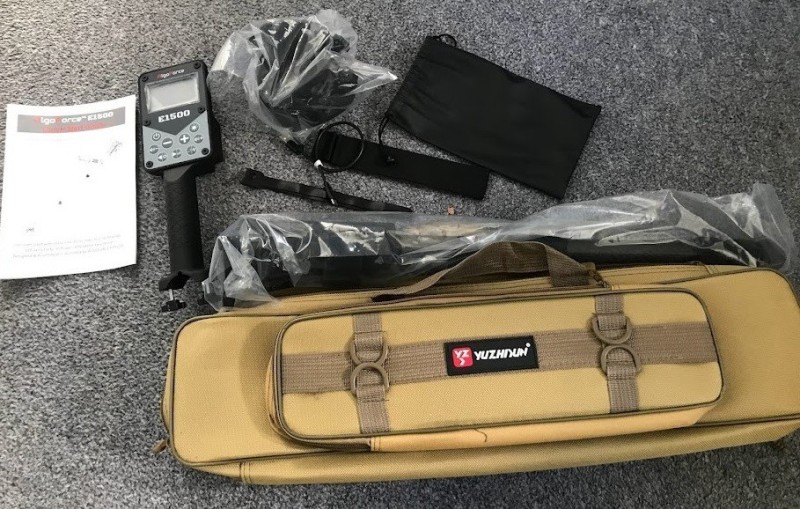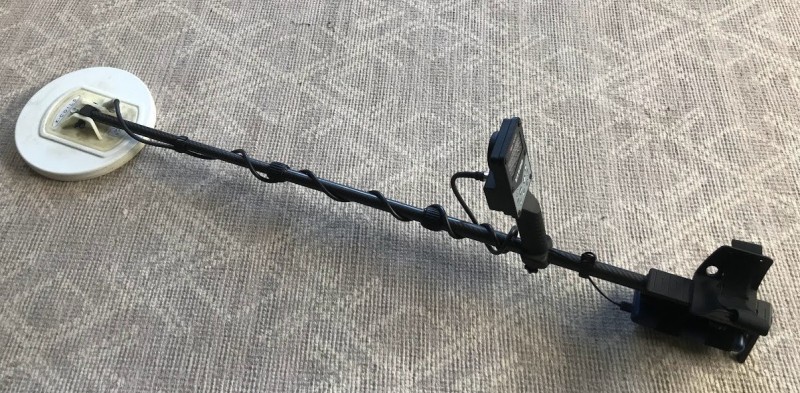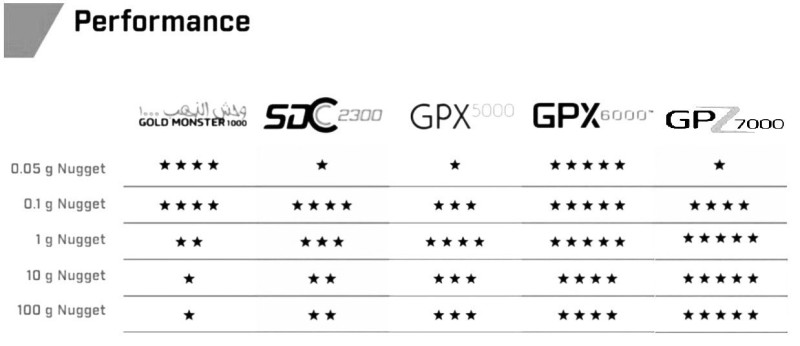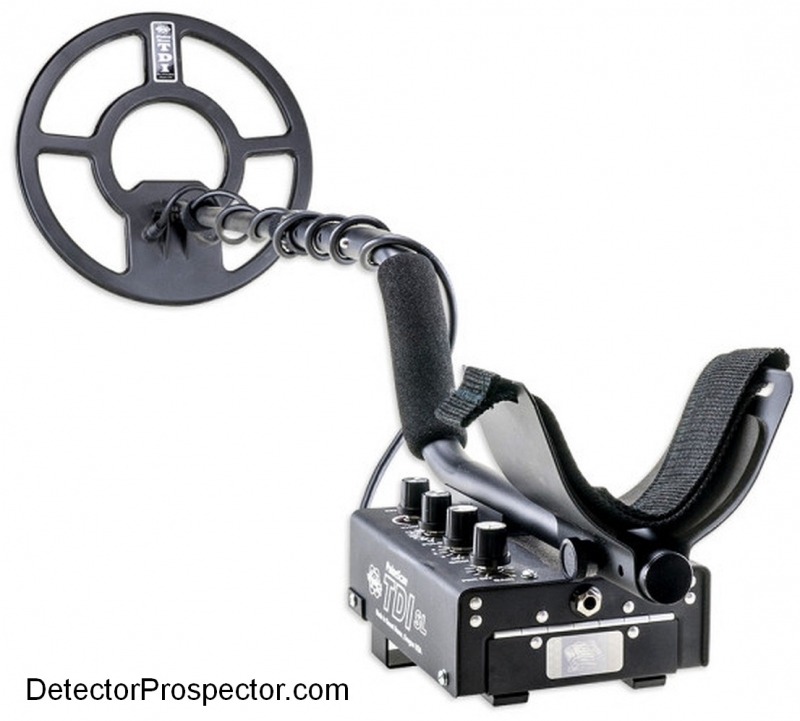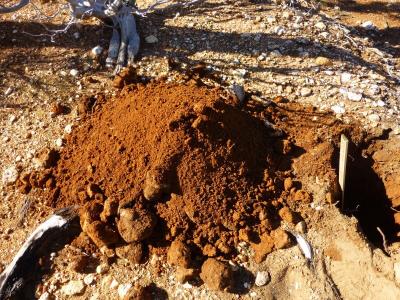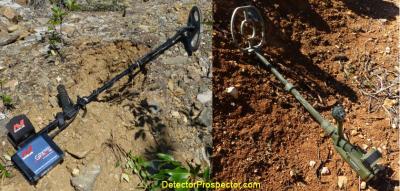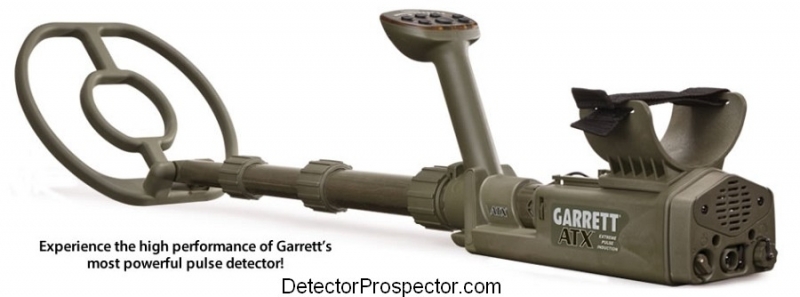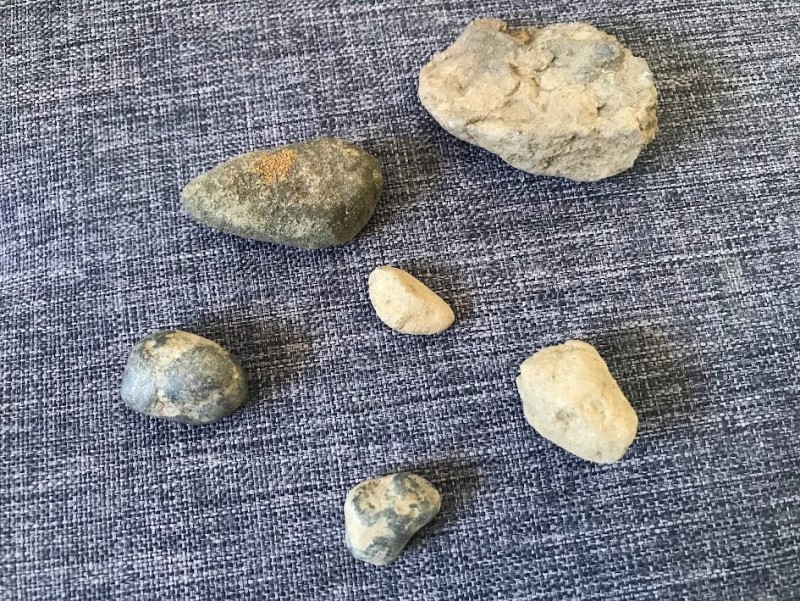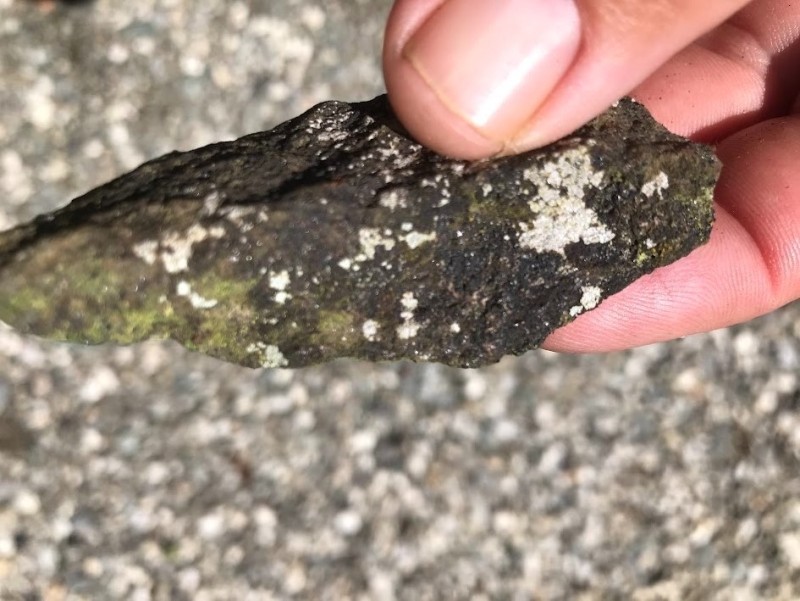Search the Community
Showing results for '"GPX 4500"'.
-
So I'm in Idaho and dont see Algoforce making any inroads here for a at least a few months. What can I do to upgrade my gpx 4500 ? Don't have any aftermarket coils but I'm working on it. Are any upgrades going to be worth it? I have have learned a lot on this forum and thank everyone for posting their knowledge. I don't always have the time to geek out on the subtleties that might give me an edge. Yes I have found gold and do my research. I guess I'm asking if the aftermarket coils are worth it?
-
Okay....as I wipe my brow from exasperation......... I did this little 2-Part comparison of these two PIs mostly for me. The GPX 4000, 4500, 4800 and 5000 are detectors that I am familiar with. The Garrett Axiom is fairly new for me. However, I have already seen in person what it can do on smaller sub gram gold nuggets after finding some on my last trip to Arizona. I did not know what else it might be capable of so I did these tests. I also thought maybe some others on this forum might be interested in what the Axiom was reasonably capable of too. So I figured I would post these comparisons on here just as a public service. I immediately got comments about which one is the winner....etc, which was the farthest thing from my mind. Now this has even sparked a how deep can a VLF go and even a VLF versus PI depth debate. OK. Like Chase said, these two tests showed one thing only. They showed what these detectors could do on a hand picked set of targets, at hand picked depths at a hand picked moderately mineralized site that was semi frozen, meaning there was substantial moisture in that erosion cut. Maybe the results would be different at the same spot on a dry soil day and at temperatures well above freezing. Who knows. The second test does show basically a two to one (plus or minus an inch or so) depth ratio between the PIs used and the VLF used. Cool. What I wanted to find out for myself was basically......is the Axiom a competitive PI detector on sub gram and multi gram targets compared to a GPX 4000 with the 4000 using timings and settings that are currently still available on the GPX 4500 and 5000. Like I said repeatedly, Deus 2 was just along for the ride. Y'all can keep going with whatever you want to prove or not.
- 25 replies
-
- minelab gpx
- garrett axiom
-
(and 1 more)
Tagged with:
-
Both the GPX 4500 and GPX 6000 have no issues with carrot. My Axion on the other hand does. Relic hunting the other day I did a noise cancel twice with the pinpointer on. Then turn it off until I found the next target. As soon as I turned the pinpointer on the Axiom went nuts again. I finally just started turning the Axiom off while I pinpointed the target in the bottom of the hole. Not a huge deal, but is a little frustrating.
-
I was watching this video from Woody that he did about 3 months ago, oddly my GPX 4500 had the exact same problem whereby they'd painted the housing causing the alloy front and rear plates not to contact the housing, thereby making the alloy grounding not perform as it was intended so I had to file the paint off and it worked very well. Then with the 6000 it appears they've done the same thing, EMI shielding painted the housing, yet not connected it to the ground of the detector. It's just bizarre how these things take place. I do wonder if this is something that was a problem on early 6000's and they've resolved as they've worked it out, and later ones have the grounding done properly. I've no idea if mines been done or not, and the way he does it is a bit crude although working, I'd not do it that way with the squished washer, the tap washer seems a bit better and something a bit better than one of the fibrous cardboard types might be alright, still I prefer if this is the case and there is a grounding problem on them they fix it as a warranty repair, perhaps as part of the EMI fix with the inductors this was part of their procedures fixing this problem too, as I did notice not only was my detector no longer going crazy randomly it also appeared to be more stable with general EMI.
-
Would like some help/advice again please folks regarding these 'Doc Screamer Power Packs',as i understand it they are mainly used to reduce the overall weight by doing away with the large factory battery pack,i will be running it on my GPX 4500 but not for nugget hunting but deep pasture and ploughed sites here in the UK....so my question is my learned friends are they worth the pretty steep investment in this battery package or do folks use other 'reliable' options ?? I wont be using a external speaker because i will be using full cup headphones all the time as the temperatures dont get as hot as say in Aussie land during the peak summer months,even during the hottest days here i will then usually use the XP Deus wired backphones which in my opinion produce amazing audio quality at such a cheap bargain price. Many thanks
-
Thought I would update this post. Anyone else have newer stuff/ideas? Today I took some reloading equipment and gun related stuff to a gun store in Boise I like to thin out some of what I inherited. In a partial trade I picked up two cases. Almost identical, one is a tactical rifle and gear case, the other is a mobile gear crate. The difference being one has a gun tray, the other a deep gear tray. They have small wheels on one end (but no coffee cup holder 😥). The inside dementsions are 39.5"L x 11"W x 9.5"H. Not super padded but I can adjust that accordingly. I can fit two Nox 800's and coils, 6" 11" and 15" plus gear. It does take some spatial aptitude. Or I can fit in a gpx 4500 with coils (15x10 shown. Has holes for locks if desired. Not a pelican case but but a nice option too protect the detector and gear. And it's made USA.
-
Some Things To Take Note Of With The Algoforce
phrunt replied to phrunt's topic in AlgoForce Metal Detectors
More cool information about the Algoforce, it ground balances very salty soil fine, even in Ultra Fine gold mode using a super sensitive 10" fully spiral wound coil. This took me by surprise as the last time I was at this spot was testing the GPX 4500 with the Nugget Finder 14x9" EVO and had quite a bit of difficulty with ground balance, The Algoforce barely even needed balanced, it wasn't even bad from switch on with only a small portion showing on the mineralization bar, this was resolved with a ground balance. I was in ultra fine gold mode, on the GPX 4500 I had to drop the timings down in sensitivity, I can't remember which worked well. It maintained good pellet sensitivity once balanced, not as good as in mild soils, but still pretty good. You'll notice the sun reflecting in this photo above on the screen, so when I have the same photo with the sun behind me even further like below, you'll see just how good the screen is in direct sun, it loves it, it's brilliant in full sun, so different to the GPZ that's damn near impossible to see, it's good though, as the Algo has so much information on the screen, really good information. I must have found 15 or more 22 shells today, for the first 8 I was checking if they were 22 shells after getting their 22 target ID, then I started playing a game of odds, any big booming that with an ID of 22 was likely a 22 shell so I didn't waste my time. In may not look it in the photos but this soil is so weird, it's almost white and full of salt. I hadn't calibrated my coil in its slot as I was using it for another coil so I calibrate it in the video, you can see this being done for those interested in seeing a coil calibrate. I had a bit of trouble pressing the two buttons at once with one hand to start the calibration while holding my phone to film 🙂 Note my Ground balance numbers, 50 00, default is 50 50. It would be nice from the manufacturer to update the manual to indicate what these numbers mean in some way. 50 00 is a bit of a surprise number combination, must be the salt. Didn't spend long here at all, had too much to do, but it was worth a try to see how the detector worked in salt and it worked brilliantly. I think it's going to be a great beach detector; I wonder how it would go with a mono coil in the salt flats in Australia. Another little bit of information that may be of interest, it is looking like you can use the mineralization bars on the screen as a form of Iron probability meter, when going over an iron junk target, they rise right up like it needs ground balanced, pass over the target they drop back down. I tested this quite a bit today, every bit of iron I knew was iron before recovering it by using this method. I need to experiment with this more and see, and do some iron air tests. I have a lot to learn yet but the Target ID and other features of this detector give it much more of a VLF like feature set, and could really be taken advantage of. -
Yea the new price for the GPX 6000 at $6499 is almost laughable, at least to me. I had a hard time justifying what I paid for it almost 2 years ago. But it does find the gold. Once the Algoforce hits the US market priced at under $1800, it will most likely require some companies to lower their price or lose market share. I'm not a full time gold prospector, in fact I only gold hunt for probably 20 or less days a year. Luckily I'm well enough off I can afford to spend 6k on a metal detector just for the fun factor. But I'd rather spend the money and be able to go out and find some gold every time I go rather than settle for second best and get frustrated. I know a lot of people that hunt gold nuggets way more days a year than I do and would never spend even $2500 on a new GPX 4500 to compliment their VLF. The VLF finds them plenty of small stuff. From the sound of it, the Algoforce won't find as small of gold as a good VLF but will to allow us to find small gold a VLF won't find at greater depths in mineralized ground. So I foresee a good portion of those VLF users jumping up to an Algoforce who wouldn't buy a SDC2300 or Axiom.
-

Why Is A $1500 Pi Even Being Talked About?
Rob Allison replied to Gerry in Idaho's topic in AlgoForce Metal Detectors
Hi Gerry, I think it goes back to what most can afford. Everyone would love to own a GPX 6000 or even a GPZ 7000, but most know there are other priorities for most that come before a super, high end detector. I get calls all the time about how someone would love to own a GPZ, but the wife would leave them. Historically, the GPX 4500 and 5000 were the best sellers, more so after they were both discounted down to $2499 and $3995.00. I still today get inquiries on them, but both long discontinued here in the US. Keep in mind also, the GPX can really probably find about 85% off all the gold that is out there today. There will always be nuggets that are too small, crystalline, too deep ,,,,, and the list goes on and on .... If most would just focus on what they can find, rather than what they might be missing! I could "what if" all the time. The big advantage I see with the AlgoForce 1500 is the price and all the aftermarket coils you can use with it. I think if Minelab continued to carry and support the GPX 4500 @ $2499, we wouldn't probably be having these discussions today. Just my thoughts, -
First Gold Nugget Finds With The AlgoForce E1500
phrunt replied to phrunt's topic in AlgoForce Metal Detectors
I'm in quite mild soils especially at this spot, I could have used it all day without even using the ground balance. although the QED when I used it here required balance or it responded to the ground. The GPX 4500 didn't need balanced. Seeing it's very easy to do I ground balanced occasionally. The good bit is the information is right there on the screen for you to see, it's very easy to know how your balance is tracking so you can do a balance when necessary. When I did a balance the two sets of ground balance numbers only changed slightly, for example from 50 50 to 48 51, when I balanced on a hot rock the numbers were more dramatic going down into the 30's. It'll be interesting to see how those on very bad variable ground go, I've no doubt it will balance out the ground, how often they need to adjust it is more the question. Seeing the detector is tracking the ground all of the time and giving you the information, I wonder if patents stopped them making it track and adjust. -
First Gold Nugget Finds With The AlgoForce E1500
phrunt replied to phrunt's topic in AlgoForce Metal Detectors
Someone may need to come up with a clip with a rubber on it too to close the gap and prevent them being ripped off 🙂 I haven't used them as I bought them for my GPX 4500 and then never really used it much again and forgot about them but now the need for them arises, If I find they're no good I'll work something out. My drunkenness went away after having a long cold shower and about 2 litres of water, I think I was dehydrated or had sun stroke and somehow the rose thorn blood squirting out triggered me to feel unwell. I don't usually care much about blood, I've split my melon really badly at one point and had to get many stiches in the back of my head, and it was a gusher and looked really bad to people with so much blood coming out and I wasn't all that bothered, certainly didn't feel sick. I think the 6000 and 10x5" is a great combo, and will likely outperform the Algoforce in most situations, so you don't need to worry about getting one unless you wanted to do some beach/coin/jewellery type stuff where I can see the Algoforce being much better than a 6000. The drive home is about an hour, and 15 minutes from that gold spot I guess, 30 minutes of that is driving around a winding road along the side of Lake Wakatipu which was the part I felt sick, I had the air con cranked and I'd stopped at the shops and bought a 1.5 litre drink prior to driving home which helped too, but even with the air con going full I was sweating like mad. It's all very weird, something I've never experienced before. -
My Algoforce arrived a couple of hours ago, I had a quick refresher flick through the Quick start guide that came in the box and had a play around, to my surprise I could use it inside my house on default sensitivity and it was quite stable, I was able to test some coins on it for target ID and mess around learning the menu navigation. It's a puzzle at first as you need to remember the irons purposes, most icons are a giveaway as to what they do and the screen even tells you which ones to press on certain screens. So far first impressions on usability is for a detector with settings like this, it's very easy to use. I was able to configure my 10" X-coil on it in no time without the need for the instructions. It quickly calibrates to coils, a couple of seconds if that and you can store their size in there so you can easily go back to them, it comes pre-configured with a few common coils. It comes with this cool bag to lug it around in, I shouldn't say lug it around as it weighs nothing, it's super light and makes the 6000 feel heavy. The 6000 in the picture is shrunken down a bit for storage but was put there for a bit of a size reference. This is the contents of the package. All very professionally made, the look and feel is a long way different to the more homemade feel of the QED, a similar priced PI machine. And it all assembled with the 10" X-coil on it and configured. It's really easy to assemble, It takes a bit of getting used to the coil connector, it's different that's for sure, I'm sure if someone didn't like it they could put a GPX 5000 one into the shaft as I'm pretty sure you can buy the part but it worked fine and once, I knew what I was doing it did the trick, it doesn't use coil rubbers, a different design entirely but it does work and is probably perfectly fine, I'm just not used to it and with X-coils have very solid ears they don't flex out to fit it between them, at first I didn't think it fit the X-coils but I worked out if you slide them in from the back they fit, trying to get them in from the top of the ears is impossible. Maybe X-coils need to adjust their coils for an extra millimetre or two of width on the ears to make it an easier fit. I'll discuss this with them as they are resuming production of their GPX coils due to this detector hitting the market. Now, I filmed some video, it is very raw, my usual style of no editing and what you see is what you get, in the video you're seeing what I saw the first time doing it, I'd not even tested the nuggets I went over prior to filming. I'd just checked a couple to ensure it even worked 🙂 I'd used the detector for about 10 minutes at home in total before filming the video so be gentle, I'm just learning it. I will say for a fact it's more sensitive to small gold than the GPX 5000, some of these nuggets I used in the video the 5000 can't hit on at all. It's also more sensitive than the QED by a significant margin. I tested on a $1 coin, and had the target ID then I went into my yard where a couple of $1 coins are buried, and it was able to ID them very well, with a stable ID, I was quite surprised by this and I have to go back out with a VLF and double check it all and get some video. This is all very early days, but I'm certainly happy with it, it handles EMI so well for a PI , better than anything I've used before, and I think even for someone that just has a GPX 4500/5000 it would be a big compliment to it being more sensitive and picking up the gold the 5000 misses due to it being porous or just generally weak on, and for anyone not wanting to pay the crazy Minelab pricing for a 6000 or 7000 it's a bargain. On lead shotgun pellets it's similar to the 6000, neither will hit the #9 pellet but as the sizes increase both are the same with the pellets they will detect. I've not checked depths or anything yet just ability to hit them comes in at the same size pellet. I have so much to experiment on it yet, but happy with it for sure. The videos currently still processing by Youtube to HD but the SD version looks available now. I haven't even watched the video myself, this is raw as it gets.
-
Well, as someone in low mineral ground often looking for tiny gold, I can lay down a few points that matter. Without a doubt a higher frequency VLF like the Garrett 24k, Gold Bug 2, Equinox, Manticore, Legend, the list goes on and on will hit smaller gold, much smaller gold, and get more depth on these very tiny bits too, however once the bits creep up in size to the .1 of a gram bit and more (we will use it as a generic example cut off not a definite guaranteed cut off) then even with little minerals the PI takes over for depth, then as the gold gets bigger again say fox example 1 gram, the VLF with something like an 11" coil starts to gain some ground again but the PI's and ZVT will always be deeper. I used to use a VLF all the time for prospecting, even though I had a GPX 4500 sitting there, why? It found more tiny bits often, I had more chance of getting gold. I was convinced to put more effort into my PI and I found when I did, I lost the tiny bits entirely so found less in number of pieces and went home with nothing a lot more but the slightly bigger bits started to appear a bit deeper down so my gold weight increased. Then the GPZ and small coils came along to my stable, it was a lot more sensitive to the small stuff than the 4500 and felt more like a combination of the VLF and PI, I was getting a lot more gold and never felt the need for the VLF anymore, the bits the VLF got the GPZ didn't were very small, the 0.02 of a gram and smaller, I then purchased a 6000, found it very similar to the GPZ on small gold performance mainly as I am fortunate to have small coils for my GPZ but I always felt the GPZ was going much deeper. It's really hard to prove this sort of thing, it's not like I'm going to walk around with both detectors, it's more when using one you notice depth on targets more than using the other and some basic air testing in a way verifies it for me at least, if it's not seeing it sitting on the ground with the coil swinging above it it's sure not seeing it in the ground is my theory. The Algoforce now comes along, again it appears to hit similar size bits as the 6000 and 7000, I think it has a little less depth on them, but still hitting them well. The VLF's I put all of these detectors in competition with on small gold are the 19kHz range, not the higher frequency machines. Detectors like the Gold Bug Pro, think of the smallest bits it will hit, that's more in line with the best of the best in the PI and ZVT tiny target performance. That's not talking about depth, it's talking about the smallest gold they will hit, depth varies but often the PI's and GPZ will exceed the VLF depth too, so many variables. I think the cut off point for PI and GPZ on tiny gold is about 0.03 of a gram, anything below that you need a VLF. Minelab did this chart for the 6000's release, indicating it was better on a 0.05g nugget than the GM 1000, and they ranked the GPZ so low, but that's their fault for not releasing coils for it. I scoffed at this as no way in the world is the 6000 more sensitive to 0.05 than a GM, but in the right hot soil, maybe it is, certainly not my soil.
-

Minelab GPX 5000 Discontinued In U.S. ?
Rob Allison replied to Steve Herschbach's topic in Detector Prospector Forum
Hi Guys, Not to toot any horns, whether it really matters or not, but we purchased all the GPX 5000's Minelab Americas & American Detector Distributors had early last year. We sold them all within months of the purchase at $3995.00 US. Prior to that, we purchased all the GPX 4500's that were selling at $2499 and we blew them out like Hotcakes. I personally wish they were both available, the GPX 4500 at $2500 would still fly off the shelves in my opinion here in the US. I agree, at some point the parts are not available forcing them to discontinue detectors. Rob -
The AlgoForce E1500 is new for 2024 from a new player in the metal detecting market, AlgoForce Pty Ltd of Australia. The E1500 is aimed primarily at the gold nugget prosecting market but will also have applications for beach jewelry hunting and more. The detector offers several unique and innovative design features not seen before in pulse induction models. Also unique is that it comes without a coil or powerpack. Instead the user supplies their own from the vast array of Minelab compatible PI coils already on the market. Power can come from any 5V DC USB powerbank. This lowers up front costs and shipping expense, and lets the owner customize the detector for their particular needs. AlgoForce E1500 metal detector Ultra-Fine PI Technology - Yes Conductive Target ID - 0-99 Fundamental Transmit Frequency - 1500 Hz (adjustable) Coil - Mono Coils Only, User Supplied* User Coil Calibration - Yes LCD - B/W 2.7” 400x240 pixels Backlight Adjust - Yes Mic for Ambient Sound Awareness - Yes Handle Vibration - Yes Loudspeaker - Yes 3.5mm Headphone Socket - Yes Ground Balance - Ground Grab, dual ground balanced channels Sensitivity Control - Yes (Visual detection threshold for easy sensitivity control) Audio Threshold Control - Yes Audio Tone Control - Yes Frequency Scan - Automatic and Manual (Visual representation of noise levels across all frequencies in one graph for easy manual frequency selection) Volume Control - Yes Stem Length (Adjustable) - Fully extended: 145cm Collapses to 65cm Weight - 1.85 lbs (840g) without coil or powerbank. Approximately 3.9 lbs with 8x6 mono coil and 10000 mAh powerbank. Power Source - User Supplied External 5V DC USB powerbank Average Current Consumption - 700mA Warranty - 2 years, Limited Part/Labor * Compatible with GPX 4500/5000 aftermarket mono coils. The Nugget Finder 8"x6" Advantage Sadie coil is recommended for outstanding ultra-fine gold detection and excellent EMI immunity. It is also recommended in the Ultra-Fine Gold detection mode for finding fine jewelry, coins, and other treasures on the beach. The Nugget Finder 14"x9" Evolution Mono coil is a top choice for comprehensive coverage of gold nuggets of all sizes in various soil conditions. It is also recommended in the Normal Gold detection mode for finding deep jewelry, coins, and other treasures on the beach. AlgoForce E1500 User Manual AlgoForce E1500 Quick Start Guide Forum Threads Tagged "algoforce"
-
I do what I can to foster competition that develops alternatives to the all too common VLF detector. There are plenty of options out there, but in my opinion they all weigh too much or cost too much. Usually both. I envision people out there with a popular VLF metal detector for beach, relic, or gold detecting. These machines all sell for around $700 and weigh 2.5 - 3.9 lbs. Perhaps they would like to add a ground balancing PI (GBPI) to what they have. I think that for "normal people" with normal budgets a machine under $2K and under four pounds just makes sense. It would be more than twice what they spent for their VLF, and in this day and age there is no reason why a decent PI should weigh over 4 lbs. I am drawing the hard line at 5 lbs. I am setting under 4 lbs more as an aspirational goal that I think can be achieved, but recognize that battery power and coils are key inhibiting factors in high power PI systems that may make sacrifices in depth necessary to get total weight under 4 lbs. To clarify what I am talking about here, I should say that for many people a $700 VLF detector is a great place to start and in many cases is all a person ever needs. However, there are places where extreme ground mineralization and mineralized rocks (hot rocks) severely impede the performance and use of VLF detectors. Alternative technology to deal with these conditions has been developed, by far the most familiar being the Minelab ground balancing PI (GBPI) detectors. These differ from common PI detectors by having the ability to ground balance. Other brands have offered the Garrett Infinium (discontinued) plus Garrett ATX and the White's TDI models. These detectors are used not just for gold prospecting but also by relic hunters, beach detectorists, and others who face challenges regarding ground mineralization and VLF detectors. Frankly, in my opinion GBPI technology is largely maxed out. The main room for improvement comes now in better ergonomics at lower prices. This challenge therefore limits detectors to those that weigh under 4 pounds with battery included, and which sell brand new with warranty after discounts for under US$2000. Detectors need not be ground balancing PI models, but must offer similar ability to ignore mineralized ground and hot rocks that trouble VLF detectors. I am going to rate detectors as to their relative performance using what I call the "Minelab Rating Scale. Details here. 1. Minelab SD 2000 - crude first version, very poor on small gold, excellent on large deep gold 2. Minelab SD 2100 - vastly refined version of SD 2000 3. Minelab SD 2200 (all versions) - adds crude iron disc, ground tracking 4. Minelab GP Extreme - adds greatly improved sensitivity to small gold, overall performance boost. 5. Minelab GP 3000 - Refined GP Extreme 6. Minelab GP 3500 - Greatly refined GP 3000, last and best of analog models 7. Minelab GPX 4000 - First digital interface, rock solid threshold 8. Minelab GPX 4500 - Refined GPX 4000, solid performer 9. Minelab GPX 4800 - Released at same time as GPX 5000 as watered down version 10. Minelab GPX 5000 - Culmination of the series, current pinnacle of GBPI prospecting machine technology. All Minelab models leverage an existing base of over 100 coil options from tiny to huge. I am a very practical person when it comes to detecting. I know all the existing models and options by all brands very well, perhaps better than almost anyone. This is the way I look at it is this. If I personally were to spend a lot of money to go gold prospecting for one month, and needed a GBPI detector, considering machines past and present, what would I get and in what order of choice? Put aside concerns of age, warranty, etc. just assume functioning detectors. Here is the issue in a nutshell. On the Minelab scale of one to ten as listed above, I would be generous in rating the White's TDI SL as a 2. Same with the Garrett Infinium which I will mention in passing as it is no longer being made. If I was going to spend a month of my time and a lot of money going on a prospecting trip, I would choose a TDI in any version over the SD 2000. I might go with a TDI Pro over a SD 2100 but I would have to think real hard about that, and when push comes to shove I would go SD 2100 were it not for the realities of age I said to ignore. A newer TDI Pro might be a better bet than a very old SD 2100 from a reliability standpoint, but again, this would be a tough choice. The TDI SL not really. In my opinion I would be shooting myself in the foot to go on this hypothetical trip with a TDI SL instead of a SD 2100. You see the problem now? The Garrett ATX fares better. I would rate it a 3, roughly analogous to the SD 2200 variants. Still an agonizing choice really and the ATX being new versus SD 2200 being old might again be the tipping point, but from a pure prospecting options perspective the case can be made that the SD 2200 might be the better way to go. The problem for this challenge is the ATX weighs way over 4 lbs and sells for slightly over $2000. The price is close enough really but the 7 lb weight is way off. That's it folks. That is reality. The best of the best that the competition can offer can only go solidly up against models Minelab has not made in years. I am not saying that to be mean or as some kind of Minelab toadie, that is my pure unvarnished opinion as a guy who is pretty well versed on the subject. Let's bring it all home. This person with the $700 machine really, really wants that under 4 lb, under $2K GBPI machine, but if they do their homework they discover that truthfully, they would be better off shopping for a used Minelab than what the competition offers new. With the TDI SL rated as a 2 the ATX in a much lighter box at under $2K is a solid win as a 3. A well designed ATX with standard dry land coils would look very enticing as compared to the GP series Minelabs. But Garrett refuses to budge! White's can certainly do something, anything to improve the TDI SL. A battery that lasts all day would be a good start. In the end they are limited by the basic single channel design of the machine. The SD 2000 dual channel design was literally the answer to and the improvement on the single channel technology used in the TDI, the basics of which predate the SD 2000. Still, White's currently owns the under 4 lb under $2K GBPI category so they have the first out of the starting gate advantage. Anything they do would at the very least just show they have not given up. The Minelab MPS patent that formed the basis of the SD series has expired. Not sure about DVT, which formed the basis of the GP series. Where is the competition? What the heck is going on here? Much gnashing of teeth and pulling of hair is going on here, that's what!!! That is my challenge to the manufacturers. Under 4 lbs, under $2K, on the 1-10 scale I am offering, what is the best you can do? The TDI SL as a 2? Really? Yes, really, that is currently the best of the best in the brand new ground balancing PI, full warranty, under 4 lb, under $2k category. You can pick up a 3.5 lb TDI SL right now brand new for $1049. The White's TDI SL takes the crown. Note that a challenger has a half pound of weight they can add to the TDI SL and still make the 4 lb mark, and retail can be almost double the $1049 of the TDI SL and still come in at the 2K mark. I therefore do not think my challenge is outright crazy. Hopefully we will see more competition in this wide open category soon. I have been beating this drum for years to no avail, but I do have reason to believe we are finally going to see more alternatives soon. I hope. Maybe? All I know is I have had it. I sold both my 6.9 lb Garrett ATX and 7.2 lb Minelab GPZ 7000 and am boycotting metal detectors that weigh over 5 lbs from here on out. I don’t care how well they work, I simply refuse to buy such heavy beasts anymore. In the future I will support and give my dollars to companies that pay attention to and prioritize lightweight, more ergonomic designs. White's Electronics TSI SL metal detector
-
Early Field Review Of AlgoForce E1500
phrunt replied to PhaseTech's topic in AlgoForce Metal Detectors
I couldn't agree with Steve and Karelian more. This whole has to be the best or shouldn't exist attitude is somewhat bizarre, we'd all be driving Lamborghini's or something if we followed that chain of thought through life, yet what do most people drive? very cheap cars by comparison. It's the same with metal detectors, a majority of people aren't running the highest price models there is and a big hole was in the market where this detector slots right in are people that didn't even buy one as they were too expensive. I've been hoping for something like this for a long time, I took on the QED and tried my best to have it fill that role but it really wasn't up to the standard of a professionally built metal detector, more of a DIY home built using parts from an electronics store, something that looks like it was slapped together from one of the electronics kits from the 70's and 80's and while it's performance was OK, especially on smaller shallow gold or on larger coins and possible gold that were quite deep depending on how you had the bias set on the detector it was missing too much to make it a viable choice for most. The price was right, the product wasn't. Since then, I was hoping Garrett, Fisher or Nokta would be doing it, I've been trying to encourage Nokta to take it on knowing there is a big gap in the market, Nokta appear like they're well on their way but they don't yet have PI experience other than a pinpointer but they have a proven track record of excelling when they focus on a product. Fisher is still tinkering away, well not so much Fisher as Alexandre although he may not even end up with Fisher and who knows if and when his AQ Gold will ever hit the market. Out of nowhere comes Algoforce with basically the product I've been hoping for, it ticks the boxes. And the focus of detectors now is smaller gold with that being the reason the 6000 is so popular now, people are finding lots of little stuff and going home with something in their bottles, the 6000, the Axiom, they're not extremely deep machines, but are hot on small gold, if you want depth on big deep gold there are plenty of options, right back to the SD's or grab a GPX 4500/5000 and big coil. For someone on a small budget they have the option now of owning something like a used GPX and an Algoforce and still have plenty of change in their pocket from a 6000 or 7000 purchase, between the two detectors they have most bases covered. Something I will appreciate is the fixed ground balance, being in milder soils the 6000 and its tracking is a frustration. I've complained about the lack of a way to "fix" the balance from the start so this to me is a bonus, the manual ground grab is fantastic for me, and something the QED has tried yet failed to have for years. This machine is lightyears ahead of a QED and will likely be the final nail in the coffin for the QED, it's all the QED should have been, and professionally built to go with it and priced perfectly, with its GPX coil support I can't see any reason for anyone to buy a QED anymore. I have now spoken to Ruifeng, what a great guy, very clued on and I can see their detector being a great success, He's as enthusiastic about their detector being as good as it can be as I am about it existing, all the gray nomads driving around in their Caravan's that want to have a go at looking for gold but can't justify or afford the price of a Minelab machine, they now have a great option, people like me that hunt a lot of small gold and would like fixed ground balance and have a good selection of GPX coils already, perfect! Let's not forget, this detector is a high-performance PI for the price of a good VLF and will bring to life a lot of peoples old GPX coils sitting in their cupboards as it exceeds the GPX 5000 on small gold. X-coils are open to producing GPX coils again now with this detector on the market, I can't wait to try my 10" spiral on it, I'll have a Algoforce as soon as I can. It appears to have good Detection modes to find a variety of size nuggets. Ultra-Fine Gold: This is the go-to choice for detecting gold nuggets of all sizes and is suitable for most situations. When used in combination with the Nugget Finder 8"x6" Sadie coil or similar-sized coils, it excels, even in highly mineralised soils. This combination is strongly recommended for locating small gold nuggets in various ground conditions. Fine Gold: Fine Gold mode reduces sensitivity to mineralised soil and may not detect very small gold nuggets. When paired with the Nugget Finder 12"x8" Mono coil or similar-sized coils, this mode performs exceptionally well, even in highly mineralised soils. It's a top choice for finding small to medium gold nuggets in different ground conditions. Normal Gold: This mode decreases sensitivity to highly mineralised soil and may not detect small gold nuggets. When used with the Nugget Finder 14"x9" Mono coil or similar-sized coils, it delivers outstanding performance, even in highly mineralised soils. It is highly recommended for locating medium to large gold nuggets in various ground conditions. Large Gold: Reserve Large Gold mode for use in extremely mineralised soil with high levels of wet salt. When used with coils larger than the Nugget Finder 14"x9" Mono coil, this mode excels, even in highly mineralised soils. This combination is highly recommended for locating large gold nuggets in different ground conditions. Although the four detection modes are specially designed for detecting gold nuggets, they can also be used for finding jewellery, coins, and other treasures on the beach. With a small coil like the Nugget Finder 8"x6" Sadie, use Ultra-Fine or Fine Gold mode for fine treasures. For a large coil like the 14"x9" Evolution Mono, employ Normal or Large Gold mode for deep beach discoveries. No ground balance is needed. As a PI detector, the AlgoForce E1500 naturally rejects seawater signals; the detection mode dictates the level of rejection, ranging from Ultra-Fine Gold to Large Gold, becoming more aggressive. -
Now that the Axiom has been out awhile are there any relic hunters that can provide some feedback on how the Axiom compares to the GPX 4500/5000 on discrimination? I've scoured the internet and have found a couple of competing opinions but very little other than that. I've owned the GPX 4500 and now 5000 and for 2 years I didn't own a vlf machine and I was very successful at finding Civil War relics in pounded sites in my area. Once you get your ear "tuned" I dug very little iron. Also on the Axiom is the iron check a button you hold down or a mode you can leave it in for those high iron areas?
-
Thanks phrunt I would like to see that video, I also remember reading that you thought the GPX 4500 was in the same class as the 5000. Do you still think that ? g_j I do understand where you are coming from, mentioning bigger nuggets, are you suggesting that the older models are more likely to find a deeper large nugget than the 6000, something I suspect may be true but have no experience to back it up. My problem is simple my sniping partners have moved to detecting using 6000's they have had success and are crowing about the virtues of the 6000 telling me that a 5000 won't cut it. This is where my problem comes in, budget, I can't justify the cost of a 6000 even second hand, but given the success of the 6000 the price of a second hand 5000 has come down to a point that I'm willing to pay especially when you consider the amount of coils and accessories that can come with a used unit. In Tasmania the nuggets mostly are small but they are finding a good proportion of 1 gram + Assay results of gold that I've sold previously show that we have high purity usually around 95% most nuggets are quartz free but do sometimes have a small amount of ironstone. I was of the opinion that I would go as old as a GP 3500 but given the price of used 5000's I'm not sure about that any more, the advice is usually to get the latest model you can afford. But if a good 3500 came up at a suitable price, would it be a good choice. Thanks
- 38 replies
-
I have used the Minelab GPX 5000 since it was introduced, and in fact probably owned the first one in Alaska. I have used the Garrett ATX also since it came out with one of the first units off the production line. I have been putting this review off while I got to know the ATX. I now have over 100 hours on the detector in a variety of environments so the time has come. This metal detector comparison review was very challenging for me to write. It pits two very different yet very similar detectors against each other. In a way it is almost like discussing three detectors instead of two, and there is the issue of a huge price difference. I apologize for the length but this is a case where I wanted to be as thorough as possible on the subject. This is the review you will never see published in a magazine! In a way it is all about that price differential. If the two detectors were priced similarly there would be much less debate than is going to occur amongst people and a far easier buying decision for some to make. For me personally it really is a story of the Garrett ATX being two very different detectors at once and so I will start the review there. I have been metal detecting over forty years now, and metal detecting is very important in my life. Not a day goes by that I do not think about, write about, or actually go out metal detecting. Luckily for me a large chunk of my income is derived from metal detecting and so I can justify a collection of metal detectors for what I do. I engage in quite a few detecting activities and I strive to have the very best detector possible at my disposal for whatever it is I am doing. Because of this I am constantly on the look for new detectors that might help me in some way. However, now that the technology is maturing I have the bases pretty well covered. The only thing I was still looking for was a detector that satisfied me while water detecting in Hawaii. Every other detecting scenario I have covered to my satisfaction, but every time I hit the water in Hawaii I was left wanting something better than was available. The combination of salt water, volcanic rock, and military grade electrical interference is very challenging for any detector. What I generally want is a combination of stability and power with good ergonomics. The perfect detector should only signal on desired targets and nothing else, at good depth, while feeling good on my arm. I obviously reject detectors that get poor depth - these are usually the lower price detectors. Most top tier models are very competitive in the depth department. Other detectors I have put aside solely due to an inability to handle electrical interference. Fine machines otherwise, but unstable in an urban environment. Other detectors are too noisy in mineralized ground or too chatty in dense trash. And finally, some detectors are holdovers from the old days of heavy and clunky. I do not like detectors that make my arm hurt! I was therefore very excited when I heard the Garrett ATX was on the way. I was very familiar with its predecessor, the Garrett Infinium, which was tantalizingly close to my perfect Hawaii detector. Unfortunately the Infinium suffered in the stability department. I was also aware of the Garrett Recon Pro AML-1000 military demining detector. I was intrigued by its having a non-motion monotone search mode and wondered if that could be incorporated into a new improved "Infinium Pro" model. I not only had Hawaii in mind but started envisioning scenarios involving underwater sniping for gold employing a metal detector. Add to this that neither Minelab nor White's seemed interested in putting a waterproof ground balancing pulse induction metal detector in my hands. I never expected it would be Garrett that would come out with a second generation model based on the Infinium before anyone else got to first base. I have told you all this to explain what I was expecting and hoping for in the Garrett ATX. The fact is Garrett delivered with flying colors on my desires and the ATX is now one if the most important detectors in my collection. I have already paid for the detector with jewelry found and it is the Hawaii detector I always hoped for. Garrett ATX in Hawaii If we are talking about the Garrett ATX as a new waterproof detector for use on black sand or volcanic island beaches the review can end right here. The Garrett ATX is a superb detector for those conditions and well worth the money. There is only one fly in the ointment. If you look at the full page ads for the Garrett ATX it is clearly being marketed as a prospecting detector, and one pretty clearly aimed at Minelab's top end models. Specifically "The ATX performs head-to-head with the most expensive prospecting detectors in the world." ads by Amazon... Interestingly enough this idea was not even on my radar. I had always thought it was a huge mistake for the Infinium to be set up as direct competition for the high end Minelabs. Anyone involved in that remembers the hype and resulting disappointment and backlash. The Infinium eventually found its place but more as a water and relic hunting machine than a prospecting detector, although it is a capable enough unit. My hope was to avoid a similar scenario with the ATX. I do not like hype and prefer things to be under sold so people are pleasantly surprised when their expectations are exceeded. Hype leads to disappointment when inflated claims cannot be met. The reality here however is that Garrett has chosen to make prospecting the battlefield of choice. There is a lot of money at stake here for a lot of people, and so I am going to do my best here to compare the two units as dry land prospecting detectors. I think we can all agree that if you are looking at both the Garrett ATX and Minelab GPX 5000 and need the detector to be waterproof the Garrett ATX wins hands down. The funny thing here is that if Garrett was gunning for Minelab then in my opinion they went about it the wrong way. I get the distinct impression the design process was backwards. It was not a matter of "what do prospectors want in a metal detector?" I think it was "we have this housing on the shelf we developed at great expense to go after a military contract. We need to leverage our development cost by putting something in that housing we can sell to the public." In other words, I do not see any sign of design following function. All I see is a prospecting detector crammed in a box inappropriate for the desired end use. If Steve Jobs was into metal detectors he would be rolling in his grave. I will have to suffice instead by simply shaking my head at missed opportunity. I will explain more about that later. Let's set ergonomics aside though for now and just talk about straight up prospecting performance. How does the Garrett ATX fare against the Minelab GPX 5000 on gold in mineralized ground? I have done fairly extensive tests but I do have to throw in the caveat that the world is a big place and when you discuss prospecting detectors one truth is paramount. It is all about the ground mineralization and hot rocks. What works well in one place fails in another, and for this reason alone I cannot offer 100% assurances. I have spent a month traveling Western Australia detecting every day and so I am quite familiar with what prospectors face there. I am not about to begin to offer more than an opinion about how these two detectors fare in the worst Australian ground but I do think my conclusions will prove to be true. I can tell anyone right now knowing detectors the way I do that either machine will prove superior at certain locations given their differing capabilities. In a nutshell, the Garrett ATX has a ridiculously good circuit. The engineers at Garrett have done a superb job of producing a detector that out of box performs extremely well on a wide variety of gold in a wide variety of ground conditions. I tested both units in some very red mineralized soil, both outfitted with stock DD coils. The ATX comes with a 12" x 10" DD coil. The GPX 5000 comes with two coils, one of which is an 11" round DD coil and this is what I used. The nuggets ranged from 0.1 gram to 6.5 ounces. Test conditions The impression I was left with was definitely not how the GPX 5000 blows the ATX away but instead by how well the Garrett ATX does. It is impossible to not be impressed by how well the $2120 detector does when run head-to-head against a $5795 detector. Garrett has done a fantastic job and in my opinion their advertising claims are not off base. This is a serious prospecting circuit well worth consideration. The two detectors basically differ in the range of gold they find best. The Garrett ATX skews towards the smaller more commonly found gold nuggets. The Minelab GPX 5000 skews towards larger gold nuggets that tend to be the goal of professional prospectors. Out of box with similar coils the ATX will find small gold nuggets the GPX 5000 would normally miss without special coils and tuning tricks. It does this simply and with no fuss. However, in mineralized ground with similar coils the GPX easily bests the ATX on large nuggets. By large I mean one ounce and larger and by easily I mean by a margin of 10-15%. The GPX 5000 does this using a coil that in my case had never been on the detector before. Most Minelab users would never consider hobbling the detector by putting the 11" round DD coil on if hunting large nuggets at depth. It is informative therefore that even doing this in the interest of "fairness" and with nothing more than stock Normal timing with Gain bumped to 16 (out of 20) the Minelab GPX 5000 easily outperformed the Garrett ATX on a 6.5 ounce nugget. The ATX was at max Gain of 13 for the test. Now the depth differential here was only about two inches but I have to throw in the huge caution note again that it will vary depending on ground conditions. Absolute depth was about 17" ATX versus 19" GPX for good solid signals. The kind nobody can miss. Again, do not take these as some sort of magical numbers as ground conditions and even nugget shape and alloy could cause you to get some surprising differences. That is why I hate mentioning exact depths and differences in most cases and just stick to relative conclusions. But you are going to ask so there you go. For reference a Fisher Gold Bug Pro with 13" round DD coil and White's GMT with 14" elliptical DD both with settings jacked to the max were barely able to obtain this solid gold 6.5 ounce nugget at 12" in this ground and the GMT in particular would not really have been able to hunt maxed out the way it was. Depending on who is reading this the response may be "really, only two inches?" or "wow, two whole inches!" Similarly, it is interesting to see the GPX with DD coil scrub a little nugget with no signal that the ATX easily detects at a couple inches. This however does end up being my basic and not new finding by any means. Others have reported similar results. The ATX does better on small gold and the GPX on large straight out of box with stock DD coils. I do believe the GPX has more ability to handle more varied and more intense ground conditions and hot rocks due to its many adjustments. However, this is more a belief than a fact as so far the ATX has easily handled everything I have thrown at it, including salt water, basalt rocks, and electrical interference in Hawaii. Garrett does make use of a salient fact in its advertising. The ATX handles a wide range of conditions with deceptively few settings. This makes it very easy to set up and it avoids a common complaint with the GPX detectors. They are so complex people are often left wondering if they have the optimum settings for the conditions. I know for a fact from observation that many people tend to use timings that are too aggressive for the actual conditions when using a GPX. The tendency often is to find something that seems to work well and then to just default to that way if doing things, even if conditions change. To get the best performance out of a GPX does require that a person be somewhat of a tuning wizard. The bottom line for many more casual prospectors in the United States especially is that the Garrett ATX represents a fantastic value. It is truly impossible to say but in my case at least most of the gold I find in the US with my GPX an ATX would have found it also. In particular when hunting areas where bedrock is a foot or less the ground would have to be extremely hot indeed for the ATX to not only find what the GPX will but to have an edge on the more common small gold. Even in deeper ground as long as the gold is measured in grams and not ounces and the ground not extremely mineralized the ATX is going to be a close match with the GPX. Again, out of box with stock DD coils. Where the ATX is going to clearly come up short is on large nuggets, especially those sought after 1 ounce and larger nuggets at depth and on gold in the worst mineralized ground and hot rock locations. To be perfectly honest I feel my putting an 11" inch round DD coil on my GPX 5000 in the interest of being fair does not reflect for one second how I look for gold. I am not out there being fair, I am out there looking for gold. I will be running a larger mono coil with settings optimized for larger gold and then the difference in large gold performance between the ATX and GPX is even more pronounced. I would consider a 10-15% to be a bare minimum advantage gained while in effect running the GPX with its hands tied. I have not done comparisons on the iron discrimination systems but I find the method used by the ATX to be inherently more reassuring. The GPX reacts to shallow ferrous targets by blanking out, a sort of non response. The ATX has a momentary ferrous check that kicks in at the touch of a button, and that gives a low tone growl on iron, which provides a more nuanced and natural response expected by most detector users. I am not a big fan of using discrimination on either unit but I did find the ATX method more to my liking for confirming shallow ferrous stuff as trash that I already thought was trash due to the response. Note that on either detector the ferrous rejection only works on shallow items and only with a DD coil. The amount of rejection is adjustable on the GPX and preset on the ATX so more tests really need to be done in this regard to determine which is the more accurate and useful system. Minelab GPX 5000 and Garrett ATX (Minelab outfitted with optional Nugget Finder coil) I do own both detectors and there is a simple reality here. If I am going looking for gold in the water, be it jewelry or nuggets in a creek, I will grab the ATX. For any other prospecting, the vast majority of it, I will be using the GPX 5000. I am not sure where the line between casual and serious is, but I am way, way over on the serious side. I spend a great deal of time targeting and hunting deep ground looking in areas where very large nuggets have been found historically. Most of the ground I detect I am hunting because it has produced nuggets weighing a pound or more in the past. I hunt tailing piles a lot so bedrock is tens of feet down, and the gold can be at any depth from shallow to extremely deep. I think most professionals would tell you that small gold is what happens along the way while looking for the big stuff, and at the end of the day it is the big stuff or the lack of it that makes the difference. I found over thirteen ounces of nuggets metal detecting in 2013 which is no great sum of gold in my book, but well over half of it was in the form of two nuggets, one weighing 6.5 ounces and the other 2.37 ounces. Now in this case the ATX would have found both these nuggets. Yet I would not use anything but a Minelab GPX for what I am doing. I am spending a lot of valuable time going over ground that I may only get one shot at. I plan these things well in advance and not only time but good money is invested in taking my best shot at getting good results. I basically cannot afford to be running anything that I feel does not give me the best chance of delivering that make or break it big nugget. One nugget can make all the difference between a month of lackluster results and fantastic success. If both the Garrett ATX and Minelab GPX 5000 detectors had exactly identical electronic performance I would still be swinging the GPX. I am on one hand very impressed with the ATX as a nugget detector and on the other hand very disappointed by it. The up front decision to use the Recon AML-1000 housing is an automatic fail from a nugget detecting perspective in my opinion. It adds not only needless weight but weight that is very much an impediment in rough, uneven terrain. This is accentuated by a stock coil that is sensitive to knocks and bumps. It requires an extra level of coil control to manipulate the detector in such a way as to not produce excessive false signals. This differs from Minelab coils that basically do not false at all unless something is wrong with them. I would caution anyone using a detector the way I do that the ATX requires extra care as regards the possibility of repetitive motion injury. Trust me as somebody who detected too much one year and ignored the signs this is something to regard seriously. A harness is a must for weeks of long daily use of the ATX. I shudder to think about how the detector feels with the 20" long rear mounted mono coil hanging off the front. That is an ergonomic nightmare. The ATX features silicone lubricated battery door o-rings that collect dirt. The coil connectors also have o-ring seals and even worse delicate pin connectors subject to damage if not carefully lined up. The headphone connector is similar to the coil connectors. All these are required to make the detector waterproof and not only unneeded for normal dry land use but an impediment as regards serviceability in the field. The coils are sold as a unit with the telescoping rod assembly adding needless expense and weight and making carrying an extra coil around something to be avoided. The rear mount enables the ability of the detector to fold up but is another weak point from a serviceability aspect and ergonomically the worst way to mount a coil. I always considered ergonomics to be the easy low hanging fruit for anyone considering manufacture of a detector to compete with the Minelab PI series, and I am frankly amazed anyone could make something even heavier I am less excited about handling. It is an absolute fact I would put the GPX aside for an alternative, even if that alternative was next best in overall gold ability, if it offered a big advantage ergonomically. I in fact often do decline to "harness up" and set the GPX aside in favor of a lightweight VLF at times because I am just too tired or not in the mood. More importantly, in steep terrain bedrock is often shallow and so when hunting hillsides and slopes there really is no advantage to using a GPX in ground only inches deep. I would very gladly use a properly designed Garrett ATX instead of a Minelab GPX in many situations that I currently encounter. In particular areas where bedrock is less than a foot deep or in areas where large nuggets have historically never been seen. The only reason right now that is not going to happen is I do not want the ATX on my arm. Yes, the ATX has an inherent advantage on small gold but nothing I can't negate by putting on a small mono coil and running the GPX hot. No, in my opinion Garrett missed a major opportunity to wow somebody like me by putting a fantastic prospecting circuit in a package very inappropriate for the target audience. Metal detectors are tools. Now the fact is that for the average person Craftsman tools do just fine and represent good value. But the guy making his living with his toolbox is probably going to be investing in Snap-on tools. It is an apt analogy accentuated by the real performance difference that exists between the Garrett ATX and Minelab GPX detectors on the kind of gold most pros are looking for. The vast number of accessory coils and other aftermarket options on top of a well proven platform makes it an easy decision for the serious prospector. Minelab makes a tool designed specifically for a certain job. The Garrett ATX unfortunately I feel is a duck out of water when employed for normal prospecting uses. I do have to say my hat is off to Garrett for producing a detector that is the first to really give Minelab a run for the money. I hope they do follow up and produce a model expressly designed from the ground up as a dry land prospecting machine. It may well become my primary prospecting detector if they do so. If you have read this review carefully you should understand the issues involved. For many people wanting maximum bang for the buck a Garrett ATX straight up and used properly is a real bargain in a PI prospecting machine. It can and will find gold and find it very well. The guys like me (you know who you are) that probably already have a Minelab PI plus extra coils, batteries and so forth can continue waiting for the next big thing in nugget detecting. You may also consider the Garrett for exactly the reason I did. It is waterproof, and currently is the closest thing you can get to a Minelab PI in a waterproof package. In closing I am curious to see how both detectors do for me this year. The ATX has the lead with about 2.5 ounces of gold and platinum jewelry found so far. I plan on using it often to hunt jewelry every chance I get in 2014. The GPX I will once again be taking to Alaska for a couple months of nugget detecting which may or may not pay off with a large nugget found. I will be hunting the right places but large gold is rare almost anywhere you go. Given the lead the ATX already has the GPX has its work cut out for it so it should make for an interesting year. For those of you trying to decide between these two very fine metal detectors I can only sympathize and count my blessings for not having to make such decisions. However, I hope this helps you with your decision because I have done my best to try and do just that. Good luck and good hunting! 2020 Note: Since this review was written in 2014 the price for the ATX was remained the same, while the price for the Minelab GPX 4500 and GPX 5000 have both come down considerably. This does change the value proposition offered by the Garrett ATX, especially as regards the Minelab GPX 4500, which can now be had for only a few hundred dollars more than an ATX. Detailed information on the Garrett ATX Detailed information on the Minelab GPX 5000 Great video by another party (a Garrett dealer) confirming the above results at another location with a different large nugget....
-
Really cool finds, I'm not surprised by your small gold take increasing, from memory last season you used the 24k and GPX 4500 modded? Did you run the 24k this year or has it taken a hike? You did very well, sorry to hear about the single and homeless thing, you seem the resourceful type that can bounce back and do better than before.
-
I am fully aware that this is a very old post but just treated myself to a GPX4500 that has come along after only being used once,i have purchased this at well under 1/2 price and only been used just the once.The guy is selling it as he cannot master it and its been sitting gathering dust. I have about 6-7 GPX coils from 6'' Mono upto 18'' Mono that i use on my TDI Pro with great success,so when this GPX 4500 came along i could not miss it,wont ever be used for nugget hunting as it's main use will be deep hoards hear in the UK,could not justify the GPX5000 which has fine gold timings for nugget hunting so went for the slightly lesser spec 4500. Initially will be using the factory battery setup and then look at the various after market camcorder battery options as they are so much lighter and cheaper than the genuine factory battery. Just hope that i have made a wise choice on this one,i pretty certain that i have as basically its only been used for a couple of hours so in totally mint condition.
-
Thanks Nenad, on the GPZ I've tried various things including going into Severe to try get rid of them, coils appear to make minimal difference with these particular hot rocks, all coils I've tried respond on them very similar as you've pointed out. I actually found General/Difficult to be the best on the 7000 with them but still not great, and the problem is they're often buried so you're digging these faint targets thinking you might be about to recover gold and it's just a little hot rock 🙂 The GPX 5000 especially in Enhance, Sensitive smooth and Fine Gold worked quite well in dealing with them, especially when using a DD coil but then my other problem is the gold is often very small, tame the detector too much and miss the gold, so that's why I gave the Equinox a good run and it paid off that day with quite a few nuggets. I've rarely been back to the spot since other than to test coils/detectors as it's just nasty ground due to the hot rocks. As most of our gold is solid type chunky bits although very small, I'm not overly concerned about the GPX 5000 missing too much of it due to its detection holes, so it's worth giving a Concentric a try. I also intend to use the GPX as a black sand beach detector so the 15" CC would be great for that, better than the Coiltek 11" AI coil I have been using for the task I think as I'll run it in Concentric (DD) mode to cut down the EMI. I've kept a little collection of the worst types of hot rock that I struggle with the most, many of these the GPX 6000 can't get rid of at all using even difficult and the DD coil. The only painful hotrock my little collection there is missing is the green schist type rock which is always a pain on every detector however it's usually large so easy to deal with, although can sound like a nice faint target when buried even if it is big. Here are some of my most troublesome types of hot rock, the GPZ and GPX struggle with these to varying degrees but neither can eliminate them from what I've seen so far. This one sparkles with silver looking flecks in it when you move it around in the sun. I'm no rock expert so have no idea what any of them are. A little video of how they behave on a very strong hard drive magnet, one the biggest one more feels like it pushes away from the magnet than being attracted to it. The dark colour ones are very magnetic and hard to even get off the magnet, the brown ones are very frustrating as they give a soft gold like signal when buried and often fool me, with the 6000 they're really deceiving. The GPX 4500 and 5000 are much better with all of them, eliminating a lot of them or at least needing the coil to be very close to them to be a problem, hence why I'm thinking this Concentric maybe the ticket if it gives me good sensitivity, good EMI handling for this high EMI spot where a mono can be annoying on the older GPX and cuts down on the hot rocks GPX 5000 style. I'll soon know 🙂 Either way, it's going to make a killer beach coil.





